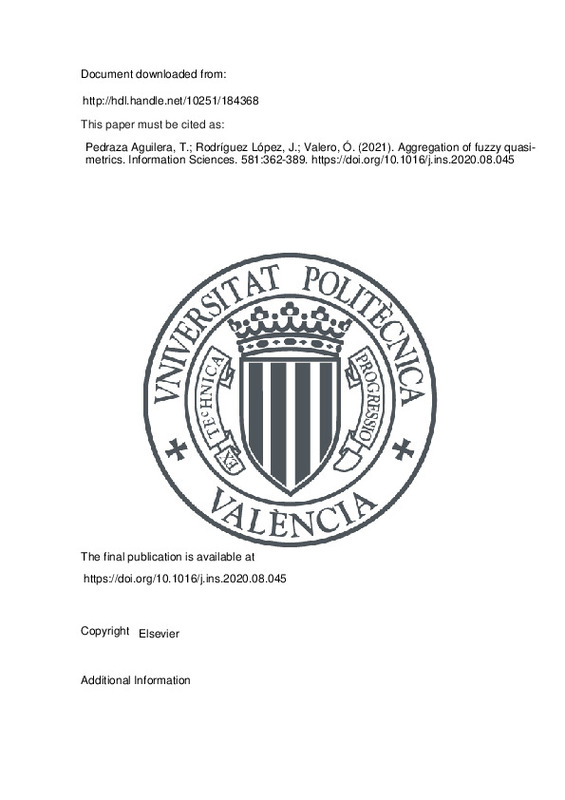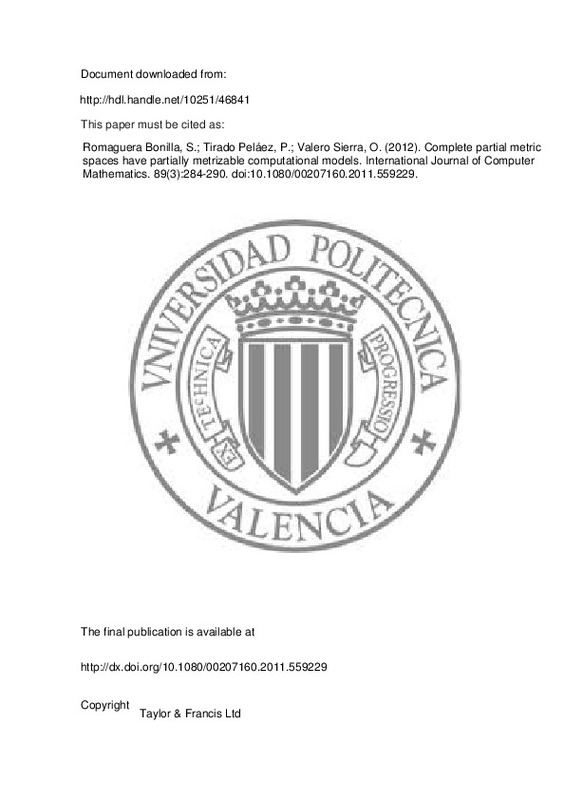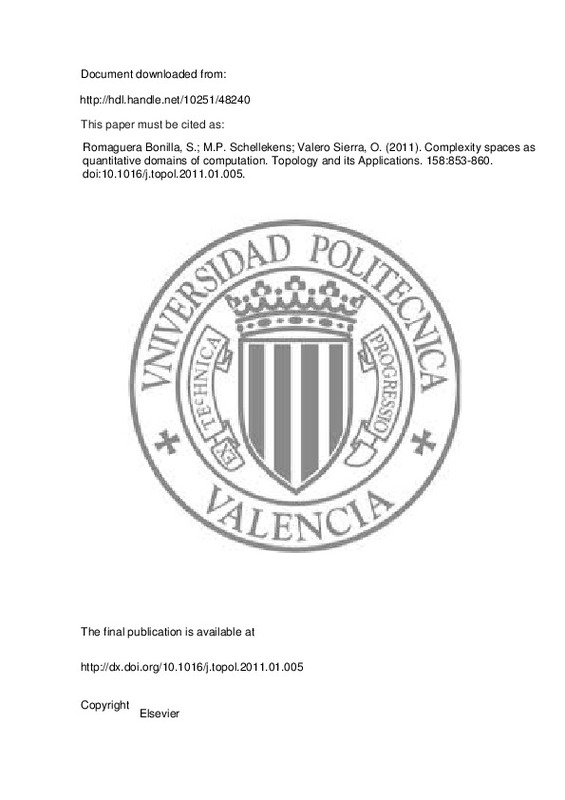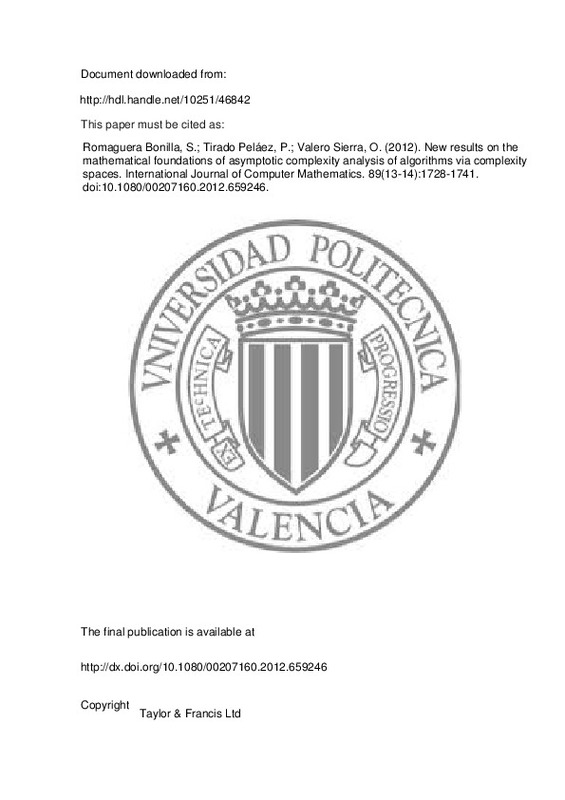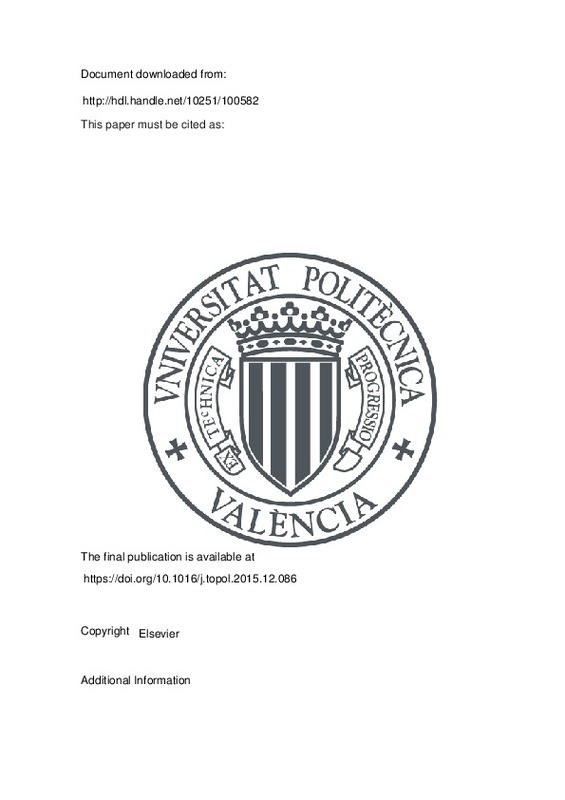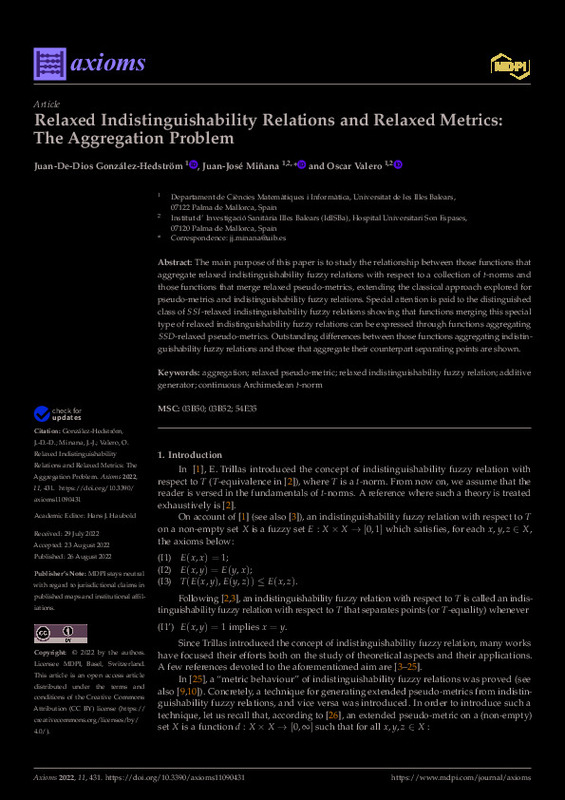

Listar por autor "Valero Sierra, Óscar"
RiuNet: Repositorio Institucional de la Universidad Politécnica de Valencia
- RiuNet repositorio UPV
- :
- Listar por autor
JavaScript is disabled for your browser. Some features of this site may not work without it.
Buscar en RiuNet
Listar
Mi cuenta
Ayuda RiuNet
Admin. UPV
Listar por autor "Valero Sierra, Óscar"
Mostrando ítems 1-8 de 8
-
Gregori Gregori, Valentín; Miñana, Juan-José; Valero Sierra, Óscar (Elsevier, 2018)[EN] In this paper we develop a new technique for constructing fuzzy metric spaces, in the sense of George and Veeramani, from metric spaces and by means of the Lukasievicz t-norm. In particular such a technique is based ...
-
Pedraza Aguilera, Tatiana; Rodríguez López, Jesús; Valero, Óscar (Elsevier, 2021-12)[EN] In the last years fuzzy (quasi-)metrics and indistinguishability operators have been used as a mathematical tool in order to develop appropriate models useful in applied sciences as, for instance, image processing, ...
-
Romaguera Bonilla, Salvador; Tirado Peláez, Pedro; Valero Sierra, Óscar (Taylor & Francis Ltd, 2012)We show that the domain of formal balls of a complete partial metric space (X, p) can be endowed with a complete partial metric that extends p and induces the Scott topology. This result, that generalizes well-known ...
-
Romaguera Bonilla, Salvador; Schellekens, M.P.; Valero Sierra, Óscar (Elsevier, 2011-04)We study domain theoretic properties of complexity spaces. Although the so-called complexity space is not a domain for the usual pointwise order, we show that, however, each pointed complexity space is an ¿-continuous ...
-
Aygün, Halis; Güner, Elif; Miñana, Juan-José; Valero, Oscar (MDPI AG, 2022-09)[EN] Partial metrics constitute a generalization of classical metrics for which self-distance may not be zero. They were introduced by S.G. Matthews in 1994 in order to provide an adequate mathematical framework for the ...
-
Romaguera Bonilla, Salvador; Tirado Peláez, Pedro; Valero Sierra, Óscar (Taylor & Francis Ltd, 2012)Schellekens [The Smyth completion: A common foundation for denotational semantics and complexity analysis, Electron. Notes Theor. Comput. Sci. 1 (1995), pp. 211-232.] introduced the theory of complexity (quasi-metric) ...
-
Romaguera Bonilla, Salvador; Schellekens, Michel; Tirado Peláez, Pedro; Valero Sierra, Óscar (Elsevier, 2016)[EN] We show that the poset of formal balls of the Sorgenfrey quasi-metric space is an omega-continuous domain, and deduce that it is also a computational model, in the sense of R.C. Flagg and R. Kopperman, for the Sorgenfrey ...
-
González-Hedström, Juan-De-Dios; Miñana, Juan-José; Valero, Oscar (MDPI AG, 2022-09)[EN] The main purpose of this paper is to study the relationship between those functions that aggregate relaxed indistinguishability fuzzy relations with respect to a collection of t-norms and those functions that merge ...
Mostrando ítems 1-8 de 8

Universitat Politècnica de València. Unidad de Documentación Científica de la Biblioteca (+34) 96 387 70 85 · RiuNet@bib.upv.es



